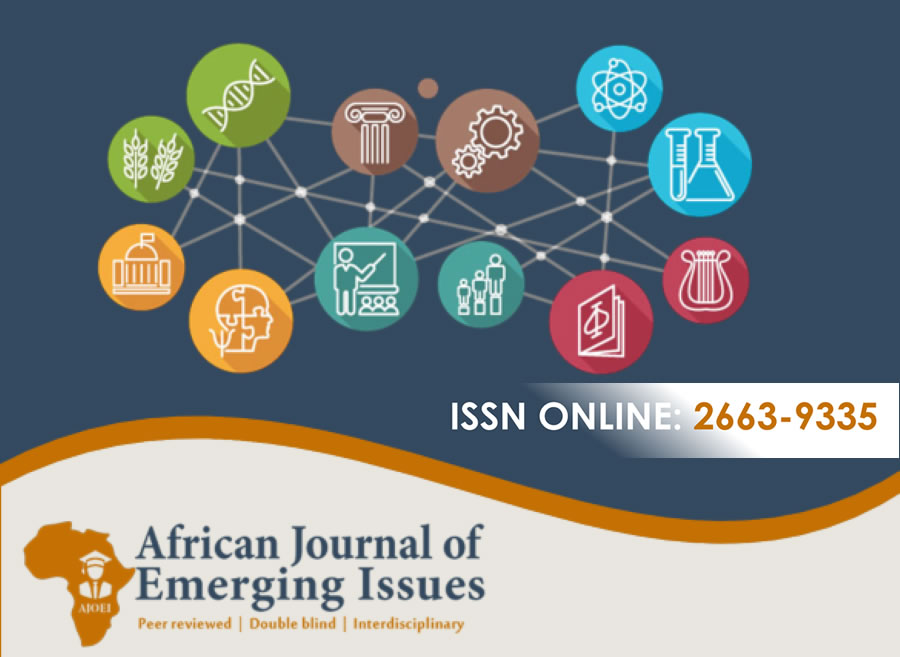DIGITALIZATION AND TOTAL FACTOR PRODUCTIVITY OF SELECTED FIRMS LISTED AT THE NAIROBI SECURITIES EXCHANGE IN KENYA
Abstract
Purpose of the Study: The study’s main objective was to determine the effect of digitalization on the Total Factor Productivity of Nairobi Security Exchange listed firms.
Problem Statement: Despite significant firm investment in advance digital technology, the overall contribution of digitalization to the performance and total factor productivity of firms listed in the Nairobi Securities Exchange has been inconsistent.
Method/methodology: To achieve the objective the study adopted the Growth Accounting Equation Approach and Generalized Method of Moments to analyze the effect of digitalization on Total Factor Productivity of selected listed firms in NSE
Results of the study: The study reveals that digitalization as a key driver of productivity among NSE-listed firms.
Conclusion and policy recommendation: The study concludes digitalization is a critical driver of Total Factor Productivity among firms listed in NSE and forward-oriented tech policies should be prioritized to build a tech savvy working environment
Keywords: Digitalization, Total Factor Productivity, Nairobi Securities Exchange.
References
Anderton, Robert, Paul Reimers, and Vasco Botelho. "Digitalisation and productivity: gamechanger or sideshow?" (2023).
Arellano, M., & Bond, S. (1991). Some tests of specification for panel data: Monte Carlo evidence and an application to employment equations. The review of economic studies, 58(2), 277-297.
Bartelsman, Eric J., and Mark Doms(2000). "Understanding productivity: Lessons from longitudinal microdata." Journal of Economic literature 38.3): 569-594.
Blundell, R., Bond, S., & Windmeijer, F. (2001). Estimation in dynamic panel data models: improving on the performance of the standard GMM estimator. Nonstationary panels, panel cointegration, and dynamic panels, 53-91
Bond, S. R. (2002). Dynamic panel data models: a guide to micro data methods and practice. Portuguese Economic Journal, 1, 141-162.
Camino-Mogro, S. (2022). TFP determinants in the manufacturing sector: the case of Ecuadorian firms. Applied Economic Analysis, 30(89), 92-113.
Communications Authority of Kenya (2022). Kenya launches trials for 5G technology. https://www.ca.go.ke/kenya-launches-trails-for-5g-technology/
Dvouletý, O., & Blažková, I. (2021). Exploring firm-level and sectoral variation in total factor productivity (TFP). International Journal of Entrepreneurial Behavior & Research, 27(6), 1526-1547.
Gaglio, C., Kraemer-Mbula, E., & Lorenz, E. (2022). The effects of digital transformation on innovation and productivity: Firm-level evidence of South African manufacturing micro and small enterprises. Technological Forecasting and Social Change, 182, 121785. https://www.sciencedirect.com/science/article/pii/S0040162522003092
Gal, P., Nicoletti, G., Renault, T., Sorbe, S., & Timiliotis, C. (2019). Digitalisation and productivity: In search of the holy grail–Firm-level empirical evidence from EU countries.
George, A. S., & George, A. H. (2024). Riding the wave: an exploration of emerging technologies reshaping modern industry. Partners Universal International Innovation Journal, 2(1), 15-38.
Kenya National Bureau of Statistics Economic Survey (KNBS)-https://www.knbs.or.ke/economic-survey-2023/
Kyere, Martin, and Marcel Ausloos. "Corporate governance and firms financial performance in the United Kingdom." International Journal of Finance & Economics 26.2 (2021): 1871-1885.
Li, P., Liu, J., Lu, X., Xie, Y., & Wang, Z. (2024). Digitalization as a Factor of Production in China and the Impact on Total Factor Productivity (TFP). Systems, 12(5), 164.
Li, S., & Tian, Y. (2023). How does digital transformation affect total factor productivity: Firm-level evidence from China? Sustainability, 15(12), 9575.
Oliveira de Almeida, E., Cateia, J. V., Barbosa, W., & Ataides de Freitas, C. (2024). Trade liberalization and total factor productivity in Brazil: A vecm modeling. PloS one, 19(11), e0312599.
Piper, A. T. (2014). The benefits, challenges, and insights of a dynamic panel assessment of life satisfaction.
Romer, P. M. (1986). Increasing returns and long-run growth. Journal of Political Economy, 94(5), 1002-1037.
Skilton, M., & Hovsepian, F. (2018). The 4th industrial revolution. Springer Nature.





